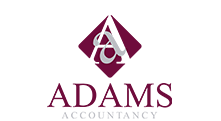Self-assessment payments on account: preparing for July 2025
Payments on account can send even the most organised business owner into a tailspin. In January, a local tradesperson contacted the office. ‘I’ve just received this massive tax bill that’s asking for next year’s tax too. Why didn’t anyone warn me about this?’
This conversation happens all too often, especially with new business owners who don’t have an accountant looking out for them. If you’re a sole trader or self-employed individual, understanding Payments on Account could save you from a nasty tax surprise.
Let's break down exactly what these payments are, why they exist, and how you can prepare for them without breaking into a cold sweat.
What exactly are Payments on Account?
Payments on Account are advance payments towards your next tax bill. HMRC essentially asks you to pay your tax (and class 4 NICs) bill in two instalments for the next tax year, based on your previous year’s tax liability.
Here’s how it works:
- The first payment is due by 31st January (along with your balancing payment for the previous tax year)
- The second payment is due by 31st July
- Each payment is 50% of your previous tax bill
So, if your 2024/25 tax bill was £10,000, you’d pay £5,000 in January 2026 and another £5,000 in July 2026 towards your 2025/26 tax. Your actual tax for the current year (2025/26) is adjusted once you submit your return.
The first-year shock factor
For many new business owners, the January after their first full tax year can be particularly challenging. Not only do you need to pay your tax for the year just gone, but you’ll also need to pay half of that amount again as your first Payment on Account.
Let’s look at a real example: A plumber in Dartford started his business in April 2023. In January 2025, he needed to pay his £8,000 tax bill for 2023/24, plus a £4,000 Payment on Account towards his 2024/25 tax. That’s £12,000 due in one go! No wonder he was concerned when he came to see us.
When do you need to make Payments on Account?
You’ll need to make Payments on Account if your Self-Assessment tax bill is more than £1,000, unless more than 80% of your tax is collected at source (for example, through PAYE from another job).
How to prepare for your July 2025 payment
The second payment often catches people off guard because it comes six months after the January deadline, when tax might not be at the forefront of your mind.
Our top tip? Set up a dedicated ‘tax pot’ and make regular monthly transfers. This approach has worked wonders for many of our clients.
Need help calculating how much to set aside each month? Book a free 15-minute chat with our friendly team to get personalised advice on managing your tax payments. In addition, we encourage our clients to complete their self-assessment tax return as early as possible after 6 April, giving you almost 9 months to save any owed tax.
Frequently asked questions about payments on account
What if your income changes?
If you believe your income will be lower in the current tax year than the previous one, you can apply to reduce your Payments on Account. However, be careful – if you reduce them too much and end up owing more, HMRC will charge interest on the underpayment.
One of our retail clients in Sevenoaks reduced her Payments on Account when she anticipated a slower year, saving her vital cash flow during a difficult period. But remember, this isn’t about avoiding tax – it’s about making sure you’re paying the right amount at the right time.
What happens if you can’t pay?
If you’re struggling to make your July payment, don’t bury your head in the sand. HMRC can sometimes arrange payment plans, but you need to contact them before the deadline.
A café owner we work with in Canterbury experienced a difficult quarter and couldn’t make her full July payment. By proactively contacting HMRC and setting up a Time to Pay arrangement, she avoided penalties and spread the cost over a manageable period.
The tax-saving habit
The most successful business owners we work with treat tax as a regular expense rather than a twice-yearly shock. Setting up a standing order to transfer a percentage of your income into a separate account each month can make tax time much less stressful.
For example, if your annual profits are around £50,000, you might need to set aside roughly £1,000 per month for tax. This approach ensures you’re never caught short when payment deadlines arrive.
Contact Adams Accountancy
Get ahead of your tax obligations
Understanding and preparing for Payments on Account is a crucial part of managing your business finances effectively. Don’t let tax surprises derail your business plans or cause unnecessary stress.
What about the other taxes?
Payments on account also apply to Corporation Tax and to VAT. More information is available about these types of tax payments on the HMRC website.
If you’re unsure about your tax obligations or want to ensure you’re setting aside the right amount, contact Adams Accountancy today for a friendly, jargon-free conversation about your specific situation. Remember, as we always say to our clients – no question is too silly when it comes to understanding your taxes.

